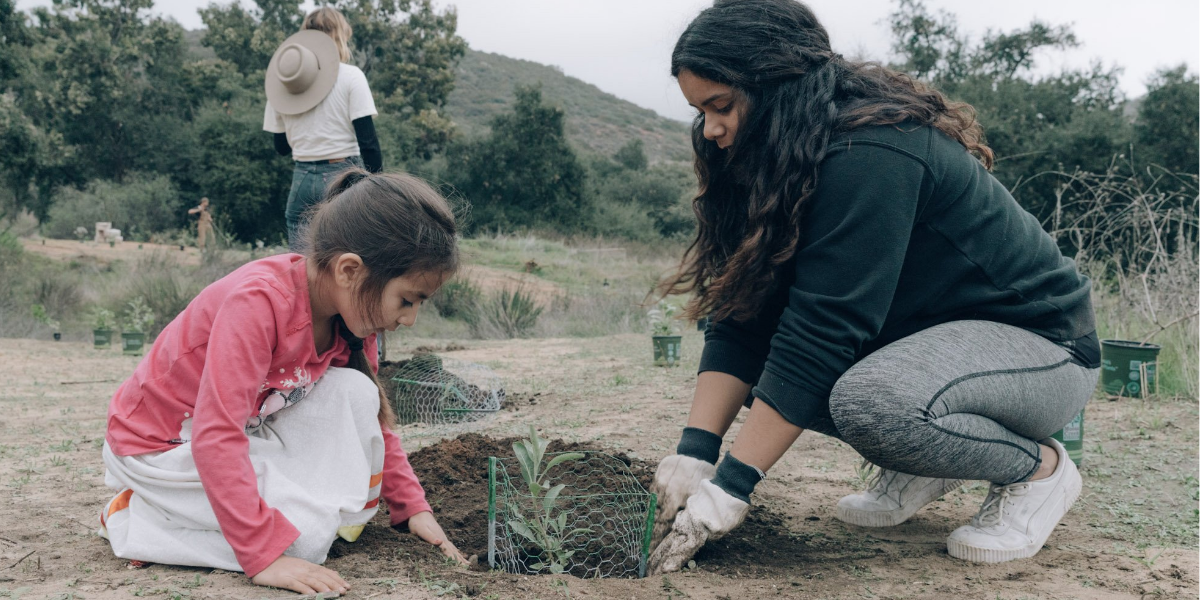Finding a way to give back to your community or to an organization that aligns with your values provides purpose and meaning. While we often take a ‘what can we do now’ approach to charitable giving, the truth is planned giving is a great way to maximize charitable impact after your lifetime.
Planned gifts are often larger than standard donations and help drive major philanthropic dollars into the nonprofit sector.
In 2021 alone, charitable bequests (the most common type of planned gift) accounted for 9% of all donations, totaling $46.01 billion. It’s a significant amount – more than doubling donations from corporations ($21.08 billion) – and underscores the importance for nonprofit organizations.
What is Planned Giving?
Planned giving, also referred to as gift planning or legacy giving, is a donor’s intention to contribute a planned gift to an organization beyond their lifetime. This is often a continuation of the donations an individual or couple has made while living, but on a much larger scale.
Unlike an annual gift, a planned gift is scheduled for the future – often as part of financial or estate plans. Typically donated through a will or trust, planned gifts are realized after a donor passes away. Typically, planned gifts are coordinated with professional advisors, attorneys and nonprofit organizations.
It’s important to note that planned giving is not limited by your current wealth.
Planned gifts are typically larger than lifetime donations because they can come from a variety of traditional and non-traditional assets at times not eligible for gifting during one’s lifetime, including life insurance policies, retirement assets, equity, or real estate holdings, rather than standard income.
This means even if you consistently contribute small gifts, your planned gift can be of a much greater value and impact.
Why Make a Planned Gift: Benefits of Planned Giving

Why is planned giving important?
“Not only does planned giving represent the opportunity to provide long-term support to an organization, but it also gives donors a chance to establish a legacy,” explained an article in Trust & Will.
Other benefits include:
- Planned giving provides an opportunity to leave a major gift that may not have been possible in a donor’s lifetime due to financial commitments.
- Charitable gifts are often exempt from estate tax, allowing more of the gift to go directly to the organization.
- Donors can avoid capital gains taxes when they transfer assets as part of a planned gift, maximizing the charitable contribution.
Perhaps the biggest benefit is that planned giving preserves a donor’s legacy.
Typically, a donor begins thinking about planned giving as they near retirement age but could start the process as early as their 40s. Since a planned gift usually aligns with a donor’s values and beliefs, the gift can be a personal one that represents a cause or nonprofit close to their heart, thus solidifying an impactful and lasting legacy for the donor.
Legacy Giving vs. Planned Giving
Planned giving is often referred to as legacy giving. The terms are generally interchangeable.
Planned gifts – or legacy gifts – can be used to support nonprofit organizations or establish legacy funds at community foundations. Legacy funds often fall into one of four categories:
- Advised Fund: Grants from a donor-advised fund are recommended by a fund advisor of your choosing. This type of fund is best when you want to designate a specific person to make grants from the fund on your behalf, typically a child or other close relative, after your lifetime.
- Broad-Purpose Fund: Broad-purpose funds support a chosen cause – for instance, protecting the environment. This type of fund is best if you are passionate about specific impact areas but you do not want to choose specific organizations to support.
- Designated Fund: Designated funds support specific organizations that you choose during your lifetime. This type of fund is best when you know the exact organization(s) you want to support, each of which receives a set percentage adding up to 100% of your total gift.
- Scholarship Fund: Scholarship funds support students’ academic pursuits and are tailored to match your interests. You set scholarship award criteria. Community foundation staff and volunteers review applications and award scholarship recipients on your behalf.
Opening an endowment, or permanent legacy fund, with a planned gift is a flexible, efficient, tax-effective way to ensure the causes you care about will benefit from your generosity forever.
Legacy gifts are usually given upon a donor’s death – but not always.
According to an article by Nonprofit Hub, legacy giving can take several forms, “including recurring donations that begin while the donor is alive and continue after they’re deceased. And legacy gifts don’t have to be monetary, either. They can include material goods, property, stocks—anything that’s of value to the beneficiary.”
Types of Planned Gifts
The planned gift definition is any charitable donation that funds a legacy fund.
Planned gifts come in several forms, each distinct and beneficial in their own unique way.
Some planned gifts provide lifelong income to families while others use estate and tax planning to provide for charity and heirs in ways that maximize gifts or the impact on an estate.
What is a planned gift example?
Some of the more common types of planned gifts San Diego Foundation stewards are:
- Donor-Advised Fund: A donor-advised fund (DAF) can be used to give now, give later or both. A DAF succession plan engages family members within the philanthropic goals set by the donor. DAFs are the most popular philanthropic option at San Diego Foundation.
- Bequest by Will or Living Trust :Naming a charity in your will or living trust enables you to support your community and retain complete control over the assets during your lifetime while earning a full charitable deduction on estate taxes. This type of gift – called a charitable bequest – can be a specific dollar amount, a percentage or all of your estate, or what remains after other bequests are made.
- Charitable Gift Annuity:A Charitable Annuity is essentially a contract between you and a charity of your choosing that involves transferring cash or property to the charity in exchange for a partial tax deduction and a lifetime stream of annual income.
- Charitable Remainder Trust: A Charitable Remainder Trust is a qualified trust that pays income to beneficiaries. After all income payments have been completed, the remainder is distributed to qualified charities. With this trust you’re able to bypass capital gains tax, increasing income, and receiving a charitable income tax deduction.
- Charitable Lead Trust: Through a Charitable Lead Trust, you and your legal or financial advisor select assets to fund a lead trust: the charity receives a fixed annual payout from the trust, and the remainder goes to your beneficiaries at the end of the charity’s payout term.
- Charitable Endowment: With a Charitable Endowment, you can leave property or money in an endowment so that the charity does not spend the principal. Instead, the nonprofit grants the endowment income per your instructions.
- Life Insurance: Gifting a life insurance policy allows you to make a significant legacy gift to the nonprofit community with tax benefits that you can enjoy during your lifetime. Through a relatively small annual cost of the premium, you can give a gift to your favorite charity that is larger than otherwise would be possible.
- IRA, 401(k) or Other Retirement Assets: A retirement plan can be a tax-efficient and simple way of including your favorite charity in your estate plan. A charity that is named as the beneficiary does not pay income or estate taxes on the distribution.
- Custom Estate Plan for Business, Investments or Special Needs Child: If you own a family business, substantial real estate holdings or a large estate, then a custom plan that considers your special property goals can be created. A custom plan option is also useful if you have a child with special needs. A child with special needs may be provided for through a “special needs trust.”
Maximizing Planned Gifts with Community Foundations
SDF can help determine which planned giving option is best for you and your family.
Our Giving Team is available to answer questions and assist with planning to ensure that your values and interests live on. By creating a charitable legacy, you can provide lasting benefits for you, your family, and your community.
Download our Guide to Estate Planning and Wills today to continue learning about planned giving and legacy funds.
Download the Charitable Legacy Guide
This valuable resource will help you understand how to set up a legacy fund and the lasting impact planned gifts can have for you, your family and your community.
"*" indicates required fields




